Assessing pulse rate is a fundamental component of vital sign monitoring and provides valuable information about a patient’s cardiovascular health. The pulse reflects the heart’s ability to pump blood effectively through the arteries and can indicate changes in heart rate, rhythm, and strength. Accurate pulse assessment is essential for detecting abnormalities such as tachycardia, bradycardia, or irregular rhythms. Various internal and external factors can influence pulse characteristics, making thorough evaluation critical in clinical practice. This guide will help you understand the principles, techniques, and clinical considerations for accurately assessing pulse rate.
What is a Pulse?
A pulse is the palpable throbbing sensation felt over certain arteries as blood is ejected from the heart with each contraction. It represents the mechanical surge of blood generated during ventricular systole, which travels through the arteries in a wave-like motion. This wave can be felt most easily in superficial arteries, such as the radial or carotid arteries. The characteristics of a pulse—including its rate, rhythm, and strength—can offer valuable insights into cardiac function and circulatory status. Regular assessment of the pulse is a key clinical tool in monitoring a patient’s health.
What is Pulse Rate?
A pulse rate is the number of palpable pulses, or heartbeats, counted over the span of one minute. It reflects how frequently the heart is contracting to circulate blood throughout the body and is expressed in beats per minute (bpm). The normal resting pulse rate for healthy adults typically ranges from 60 to 100 bpm, although it can vary with age, activity level, and health status. Monitoring pulse rate helps detect abnormalities such as bradycardia (slow heart rate) or tachycardia (fast heart rate), which may signal underlying medical conditions. Regular assessment of pulse rate is essential in both routine check-ups and critical care settings to evaluate cardiovascular function and guide clinical decisions.
Purposes of Assessing Pulse
Assessing the pulse offers valuable insight into the effectiveness of the heart’s ability to circulate blood throughout the body. The following are the primary purposes of assessing the pulse in clinical practice:
1. Evaluate Cardiac Function
Assessing the pulse provides insight into how effectively the heart is pumping blood. The rate, rhythm, and strength of the pulse can reveal signs of heart conditions such as arrhythmias, heart failure, or conduction abnormalities. For example, an irregular pulse may indicate atrial fibrillation, requiring further evaluation or treatment.
2. Monitor Response to Interventions or Medications
Pulse assessment helps determine how a patient is responding to medications, such as beta-blockers (which slow the heart rate) or epinephrine (which increases it). It also reflects changes due to fluid resuscitation, oxygen therapy, or physical activity. A change in pulse rate or rhythm after an intervention can help clinicians evaluate its effectiveness or detect adverse effects early.
3. Detect Early Signs of Deterioration or Medical Emergencies
A sudden increase or decrease in pulse rate can signal clinical deterioration, such as shock, hemorrhage, infection, or dehydration. In emergency situations, assessing a central pulse (e.g., carotid) helps determine if the heart is still circulating blood effectively. Early recognition of abnormal pulse patterns allows for prompt intervention, potentially preventing complications or saving lives.
Normal Pulse Ranges
Pulse rates vary based on age, activity level, and overall health. Understanding normal ranges helps healthcare providers identify deviations that may indicate underlying conditions or physiological responses.
Normal pulse rates vary by age, gradually decreasing from infancy to adulthood as the cardiovascular system matures. Newborns typically have the highest pulse rates, ranging from 100 to 180 beats per minute (bpm), due to their high metabolic demands and immature heart regulation. As children grow, their pulse rates slow progressively—infants range from 100–160 bpm, toddlers 90–140 bpm, and school-age children 75–100 bpm. Adolescents and adults generally have a resting pulse between 60–100 bpm, with well-conditioned athletes often exhibiting lower rates due to improved cardiac efficiency. In older adults, the normal range remains 60–100 bpm, though mild irregularities or slightly slower rates may occur with age.
Below are typical resting pulse ranges for different age groups:
| Age Group | Normal Pulse Range (bpm) | Explanation |
|---|---|---|
| Newborns (0–1 month) | 100–180 | High metabolic rate and immature cardiovascular control. |
| Infants (1–12 months) | 100–160 | Slows slightly as the nervous and cardiovascular systems develop. |
| Toddlers (1–3 years) | 90–140 | Still elevated due to growth and high activity levels. |
| Preschoolers (3–5 yrs) | 80–110 | Heart rate begins to stabilize closer to adult levels. |
| School-age (6–12 yrs) | 75–100 | Cardiovascular system becomes more efficient with age. |
| Adolescents (13–18 yrs) | 60–90 | Approaching adult norms as body matures. |
| Adults (18–64 yrs) | 60–100 | Steady, efficient heart function; athletes may have lower rates (40–60 bpm). |
| Older Adults (65+ yrs) | 60–100 | Same range as adults, but pulse may be slower or slightly irregular with aging. |
Common Pulse Sites
For convenience and assessment purposes, the pulse can be felt at various arterial sites where an artery lies close to the skin over a bone. Nine common pulse points are typically used in nursing assessments.
The radial artery at the wrist is the site most frequently used for routine pulse measurement in adults, due to its easy accessibility. Other sites are utilized in specific situations – for example, the carotid pulse in the neck is often checked during emergencies like cardiac arrest (in adults) or to assess blood flow to the brain, and the apical pulse (at the heart’s apex) is used for infants or to verify discrepancies between heart and peripheral pulses.
Below is a detailed explanation of the nine common pulse points typically assessed in nursing practice:
1. Temporal Pulse
Located on the temples, just anterior to the ear, the temporal pulse is palpated along the temporal artery as it crosses the temporal bone. This pulse site is particularly useful for assessing blood flow to the head and brain. It is often checked in cases of head trauma, altered levels of consciousness, or suspected temporal arteritis. Because it is superficial and easy to locate, the temporal pulse is a convenient site when other pulses are inaccessible.
2. Carotid Pulse
The carotid pulse is found in the neck, beside the trachea, within the carotid artery groove. It is one of the strongest and most reliable pulses, reflecting central arterial circulation close to the heart. Nurses frequently check this pulse during emergencies, such as cardiac arrest or shock, when peripheral pulses may be weak or absent. Care must be taken to palpate only one carotid artery at a time to avoid compromising blood flow to the brain.
3. Apical Pulse
The apical pulse is located at the apex of the heart, typically at the fifth intercostal space along the midclavicular line, just below the left nipple. It requires a stethoscope for auscultation and is considered the most accurate measure of heart rate. This site is especially important when peripheral pulses are difficult to detect or when patients have irregular heart rhythms, such as atrial fibrillation. It is also the preferred site for assessing heart rate in infants and young children.
4. Brachial Pulse
Palpated on the inside of the upper arm, just above the elbow crease (antecubital fossa), the brachial pulse is commonly used to measure blood pressure and assess circulation to the arm. It is also the preferred site for checking pulses in infants due to ease of access and reliability. This pulse is helpful in situations where the radial pulse is weak or when assessing for arterial insufficiency.
5. Radial Pulse
Located on the lateral side of the wrist, just proximal to the base of the thumb, the radial pulse is the most commonly used site for routine pulse assessment in adults. It is easily accessible, allows for quick evaluation, and provides reliable information about the heart’s rhythm and rate. The radial pulse is often used in conjunction with other vital signs during physical examinations and monitoring.
6. Femoral Pulse
The femoral pulse is found in the groin area, where the femoral artery passes beneath the inguinal ligament. It is critical for assessing blood flow to the lower limbs and is especially important during trauma, shock, or suspected arterial occlusion. Because it is a central pulse, its presence indicates adequate cardiac output and major artery patency.
7. Popliteal Pulse
Palpated behind the knee within the popliteal fossa, the popliteal pulse is deeper and can be more challenging to locate. It is assessed to evaluate circulation to the lower leg and foot, particularly when peripheral pulses are diminished. This pulse site is valuable in diagnosing peripheral vascular disease or arterial blockages in the lower extremities.
8. Posterior Tibial Pulse
Located just behind the medial malleolus (the bony prominence on the inner ankle), the posterior tibial pulse is used to assess blood flow to the foot and lower leg. It is an important site for detecting peripheral arterial disease, especially in diabetic patients or those with vascular conditions. Absence or weakening of this pulse can indicate compromised circulation.
9. Dorsalis Pedis Pulse
Found on the dorsal (top) surface of the foot, lateral to the extensor tendon of the big toe, the dorsalis pedis pulse helps evaluate peripheral circulation. It is routinely checked in patients at risk for peripheral artery disease, diabetes, or other conditions that impair blood flow to the lower extremities. Its presence confirms adequate arterial supply to the foot.
The table below summarizes the common pulse sites, their locations, and typical clinical uses:
| Pulse Site | Location | Common Use |
|---|---|---|
| Temporal | Lateral forehead, in front of the ear | Assess circulation to the head; used in infants or unconscious patients |
| Carotid | Side of the neck, beside the trachea | Used in emergencies; reflects central circulation |
| Apical | 5th intercostal space, midclavicular line (left chest) | Most accurate; used for irregular rhythms or in infants |
| Brachial | Inner aspect of the arm near the elbow | Common in blood pressure measurement and infant pulse assessments |
| Radial | Thumb side of the wrist | Most commonly used in adults for routine monitoring |
| Femoral | Groin area, near the femoral artery | Assesses circulation to the lower extremities; used in shock or trauma |
| Popliteal | Behind the knee | Checks blood flow to the lower legs; used in peripheral vascular assessment |
| Posterior Tibial | Behind the medial malleolus (inner ankle bone) | Evaluates circulation to the feet and lower legs |
| Dorsalis Pedis | Top of the foot, along the line between the big toe and second toe | Monitors peripheral circulation, especially in diabetic or vascular patients |
Each pulse site should be palpated with moderate pressure using the pads of the index and middle fingers (and ring finger if needed). Using too much force can obliterate the pulse, whereas too little pressure may miss it. The radial pulse is generally assessed on one side (usually right side by convention) for rate and rhythm; when checking pulses for perfusion (such as pedal pulses), pulses on both sides of the body should be compared for symmetry (equal volume and timing).
Factors Affecting Pulse and Pulse Rate
Pulse rate can be influenced by a variety of internal and external factors that affect the heart’s ability to pump blood efficiently. Recognizing these influences helps healthcare providers interpret pulse findings accurately and identify potential underlying conditions. The following are key factors that commonly affect pulse rate:
Age
Pulse rate typically decreases as a person ages. Infants and young children have faster heart rates due to higher metabolic demands, while adults and older adults generally have slower resting rates. Aging also affects the heart’s electrical conduction system, sometimes causing variations in pulse.
Exercise
Physical activity increases pulse rate by raising the body’s demand for oxygen and nutrients. During exercise, the heart pumps faster to supply muscles with oxygen-rich blood. After exercise, pulse rate gradually returns to baseline during recovery.
Stress and Emotions
Emotional stress, anxiety, and excitement stimulate the sympathetic nervous system, causing an increase in pulse rate. This “fight or flight” response prepares the body for action by increasing cardiac output.
Body Temperature
Elevated body temperature, such as during fever, increases pulse rate as the heart works harder to dissipate heat and meet metabolic demands. Conversely, hypothermia can slow the pulse rate due to reduced metabolic activity.
Medications
Certain drugs affect pulse rate. For example, beta-blockers slow the heart rate, while stimulants like caffeine or epinephrine increase it. Anesthetics and some pain medications can also alter pulse characteristics.
Hormonal Changes
Hormones such as thyroxine (from the thyroid gland) and adrenaline increase pulse rate by stimulating cardiac activity. Women may experience pulse variations during menstrual cycles, pregnancy, or menopause due to hormonal fluctuations.
Health Conditions
Conditions like heart disease, infections, anemia, or dehydration can influence pulse rate. For instance, infections and anemia often cause an increased pulse (tachycardia), while some cardiac conditions may cause slow or irregular pulses.
Posture
Changing body positions—from lying down to standing—can cause temporary changes in pulse rate. Standing typically causes a slight increase as the heart works against gravity to maintain blood flow to the brain.
Smoking and Caffeine Intake
Nicotine and caffeine stimulate the sympathetic nervous system, leading to an increased pulse rate. Chronic smoking may also contribute to long-term cardiovascular changes affecting pulse.
Understanding these factors that affect pulse rate is necessary for accurate clinical assessment and effective patient care. Variations in pulse can indicate normal physiological responses or reveal underlying health problems that require attention.
Common Pulse Terminology
In documentation and communication, nurses use specific terms to describe pulse findings:
Tachycardia
An abnormally fast heart rate. In adults, tachycardia generally refers to a pulse over 100 beats per minute (when at rest). It can be caused by exercise, anxiety, fever, anemia, dehydration, or many other factors that increase metabolic demand or sympathetic nervous activity.
Bradycardia
An abnormally slow heart rate, usually defined in adults as below 60 beats per minute. Well-conditioned athletes may normally have bradycardia at rest due to efficient heart function, but in other individuals a very low rate might result from medications (e.g. beta-blockers), vagal stimulation, or conduction abnormalities in the heart. Severe bradycardia (especially if symptomatic) can be a medical emergency.
Arrhythmia (Dysrhythmia)
Any deviation from the normal rhythm of the heartbeat. This term encompasses irregular, skipped, or extra beats. Arrhythmias can range from benign (such as an occasional premature beat) to serious (such as atrial fibrillation or heart blocks). An arrhythmia is noted when the pulse rhythm is irregular. If an arrhythmia is detected via pulse, an apical pulse and further cardiac evaluation (ECG) are warranted.
Pulse Deficit
The numerical difference between the apical pulse rate and a peripheral pulse rate (usually radial). A pulse deficit occurs when the heart beats (as heard at the apex) but not all beats are reaching the periphery or are too weak to be felt at the radial artery. For example, if the apical rate is 100 bpm but the radial pulse is 88 bpm, there is a pulse deficit of 12 beats. This is often seen in conditions like atrial fibrillation or heart failure, where some heart contractions are not strong enough to perfuse to the extremities. To assess a pulse deficit, one nurse auscultates the apical pulse while a second nurse simultaneously palpates the radial pulse, both counting for one full minute, then compare the two counts. A pulse deficit indicates that not all heartbeats are effective and should be reported promptly as it reflects decreased cardiac output or arrhythmia. (Importantly, the radial pulse rate should never exceed the apical rate – if counted properly, the apical is the actual heart rate and some beats may simply not transmit to the periphery.)
Characteristics of a Pulse
When assessing pulses, nurses evaluate several key characteristics in addition to the basic rate count. These include the rate, rhythm, volume (strength), bilateral equality, and arterial wall elasticity:
Rate
This is the number of pulsations (heartbeats) per minute. Normal resting heart rate in adults is about 60–100 bpm. A rate above 100 bpm in an adult is termed tachycardia, and a rate below 60 bpm is termed bradycardia. (Normal ranges differ by age: for example, infants have much higher normal rates than adults.) When measuring rate, note if the rate seems unusually high or low for the patient’s condition; if so, verify by taking an apical pulse and assess for other signs of distress. Extremely rapid rates can reduce cardiac efficiency (less filling time for the heart), while very slow rates may compromise perfusion, so these findings may need to be reported depending on context.
Rhythm
This refers to the pattern of beats and the intervals between them. In a normal sinus rhythm, the beats are evenly spaced. If the timing between beats varies, the pulse is described as irregular. An irregular rhythm is called an arrhythmia (or dysrhythmia). Some arrhythmias follow a pattern (e.g. a regularly irregular pulse might skip every third beat predictably), while others are irregularly irregular (no discernible pattern to the irregularity). If any irregularity is detected in a peripheral pulse, the nurse should then assess the apical pulse (which gives a direct measure of cardiac rhythm). Persistent arrhythmias often require further evaluation with an electrocardiogram to determine the cause.
Volume (Strength or Amplitude)
This describes the force of each pulse beat against the arterial wall. Under normal conditions, each beat is of equal strength and is strong enough to be felt with moderate finger pressure. Pulse volume can be graded or described qualitatively. A normal pulse is often described as “full” or “strong” – palpable with moderate pressure and easily obliterated with stronger pressure. A bounding pulse is one that is very strong, hard to obliterate (it may push forcefully against your fingertips). This can occur, for example, with exercise, fever, or fluid overload. A weak or thready pulse is one that is feeble, easily obliterated, and often faint – it may fade in and out and is easily lost under slight pressure. This can occur with low blood volume, dehydration, or shock. If pulse volume is weak or bounding, assess and document this, as it provides clues to the patient’s cardiovascular status (e.g. weak pulses may indicate low stroke volume or peripheral vasoconstriction).
Bilateral Equality
For pulses that have a left and right counterpart (e.g. radial pulses, pedal pulses), comparing them is important to ensure they are equal in strength and symmetry. Bilateral equality means the pulse volume and characteristics are the same on both sides of the body. Unequal pulses (e.g. a weaker pulse in the left foot compared to the right) may indicate a localized circulation problem or arterial blockage on one side. When assessing peripheral circulation, always check the corresponding pulse on the opposite side. For example, if assessing the dorsalis pedis pulse on the right foot, also assess it on the left foot and compare. Note: When checking carotid pulses, they should be palpated one side at a time (never simultaneously) to avoid reducing blood flow to the brain.
Elasticity of Arterial wall
This is the quality of the artery as felt under the fingers. A normal artery feels smooth, straight, and elastic (able to expand and recoil easily) when palpated. In older adults, arteries may lose elasticity and feel more rigid or twisted (tortuous) due to arteriosclerotic changes. While elasticity is not usually quantified in routine vital signs, an artery that feels very hardened or cord-like could suggest vascular disease. Noting the feel of the vessel can be part of a thorough pulse assessment, especially in the elderly.
Assessing a Peripheral Pulse (Radial Pulse)
A peripheral pulse is one that is palpated in an artery away from the heart (e.g., wrist or foot), as opposed to the central apical pulse, which is heard at the heart itself. The radial pulse at the wrist is the standard peripheral site for routine pulse assessment.
Equipment. A watch or clock with a second hand (or digital display) for accurate timing. No stethoscope is needed for radial pulse palpation. If a pulse is difficult to feel, a Doppler ultrasound device (DUS) can be used to detect blood flow sounds (gel may be needed with the Doppler).
Patient Positioning. Ensure the client is rested and comfortable, as activity or movement can affect pulse rate. If the patient was active, wait ~10–15 minutes for the heart rate to normalize. Have the patient either supine (lying down) or sitting up. For radial pulse, the arm should be relaxed and supported—for example, resting alongside the body or across the chest if supine, or resting on the thigh or a table if seated, with palm turned downward or inward for easier access.
Below are step-by-step instructions for assessing a radial pulse:
1. Introduce yourself and explain the procedure to the patient. “Hello, my name is [Your Name]. I’m going to check your pulse by feeling your wrist. This will help me understand your heart rate and rhythm. Let me know if you feel uncomfortable at any time.” Establishing rapport and informing the patient about what you will do helps reduce anxiety and gain their cooperation. It also ensures informed consent and promotes patient comfort.
2. Perform hand hygiene. Wash your hands thoroughly or use hand sanitizer before beginning the assessment. Hand hygiene prevents the spread of infection, protecting both you and the patient. No special equipment is usually needed for pulse palpation, but ensure a quiet environment for accuracy.
3. Provide privacy. If in a clinical setting, ensure curtains or doors are closed as needed. While checking a radial pulse is not invasive, it’s part of general patient courtesy and privacy.
4. Ask the patient to sit or lie down comfortably with their arm relaxed and palm facing upward. Proper positioning allows easy access to the pulse site and helps ensure accurate measurement. The patient should be relaxed, with the arm supported at heart level to avoid inaccurate pulse readings caused by gravity or muscle tension.
5. Locate the radial pulse. Use the pads of your first two or three fingers (index and middle fingers) to gently press on the wrist, just below the base of the thumb, until you feel the pulse. The radial artery is superficial and easily accessible on the wrist, making it the preferred site for routine pulse assessment. Accurate location ensures a reliable pulse count. Tip: Do not use your own thumb to measure someone’s pulse, because your thumb has its own pulse that can be mistaken for the patient’s. Apply light to moderate pressure – enough to feel the pulse but not so much that it occludes the artery.
6. Palpate and count the pulse. Once you feel a clear pulse, count the beats for 30 seconds (or 60 seconds if irregular) using a watch or clock with a second hand. Note the rhythm (regular or irregular) and strength (strong, weak, or bounding). Counting the pulse rate over 30 seconds and multiplying by two is often sufficient, but counting for a full 60 seconds is more accurate, especially if the rhythm is irregular. You’re assessing not only rate but also rhythm and strength.
7. Assess the pulse rhythm and volume while counting. Note whether the beats occur at regular intervals or if there are any skips or irregular patterns (this is the rhythm). Also, gauge the volume (strength) of each beat: does the pulse feel strong, weak, or bounding? A normal pulse is felt with moderate pressure and is the same strength each beat. If the pulse feels full and difficult to obliterate, it is bounding; if it is easily obliterated or faint, it is weak or thready. These characteristics can be graded on a scale (e.g., 0 = absent, 1+ = weak, 2+ = normal, 3+ = bounding). Compare the pulse volume on both wrists when assessing vascular health—the pulses should be equal (bilaterally symmetric) in a healthy circulation.
8. Document the results. Record the pulse rate (in bpm), the site (e.g., “radial pulse”), and the characteristics observed—such as rhythm (regular/irregular) and volume (e.g., “strong,” “weak”). Also note any unusual findings or interventions. For example: “Radial pulse 88 bpm, regular and 2+ volume, equal bilaterally.” If any abnormalities were observed (e.g,. irregular rhythm, very low or high rate), document what action was taken (for instance, “apical pulse auscultated for confirmation” or “MD notified of bradycardia”). It’s also good practice to record pertinent related observations, such as the patient’s skin color and temperature, if circulation is a concern. Accurate documentation ensures continuity of care and informs other healthcare providers about the patient’s cardiovascular status. Include rate, rhythm, and strength in your notes.
9. Explain what you found and reassure the patient, for example, “Your pulse rate is within the normal range, and it feels regular.” Keeping the patient informed promotes trust and reduces anxiety. It also provides an opportunity to answer any questions they may have.
If a Doppler device is used…
1. Apply conducting gel to the Doppler probe and the patient’s skin. The gel facilitates the transmission of ultrasound waves between the probe and the skin, enhancing the clarity and accuracy of pulse detection by reducing air interference.
2. Turn the device on and place the probe lightly over the artery until the pulse sound is heard. Proper use of the Doppler ensures detection of blood flow in cases where the pulse is too weak or impalpable by hand, such as in patients with poor circulation, edema, or obesity. Light pressure avoids compressing the artery and falsely diminishing the signal.
3. Clean the gel off the patient’s skin afterward. Removing the gel maintains patient comfort and hygiene, and prevents skin irritation or staining of clothing or linens.
4. Count the beats via the Doppler’s sound. The Doppler provides an audible representation of the pulse, allowing for accurate measurement even when tactile assessment is not feasible.
5. Document that a Doppler was used if applicable. Documenting the use of a Doppler indicates that an alternative method was necessary, ensuring clarity in the patient’s medical record and supporting continuity of care for future assessments.
These steps ensure a safe, effective, and patient-centered approach to pulse assessment using Doppler technology.
Assessing an Apical Pulse
The apical pulse is a central pulse located at the apex of the heart – the point of maximal impulse (PMI). This pulse is assessed by auscultation (listening with a stethoscope) over the chest, rather than by palpation. Assessing the apical pulse is indicated in certain situations: for example, if a peripheral pulse is irregular or difficult to palpate, if the patient has a cardiac or pulmonary condition affecting heart function, or before administering medications that affect heart rate (such as digoxin). The apical pulse is also the preferred site for infants and children under about 2–3 years old, since their peripheral pulses may not be reliable. It provides a direct count of heartbeats and can reveal pulse deficits or heart rhythm abnormalities more accurately.
Equipment. A stethoscope and a timekeeping device (watch or clock). Also have alcohol wipes to sanitize the stethoscope earpieces and diaphragm before and after use.
Patient Positioning. Position the patient lying supine in bed or sitting upright, whichever is comfortable and allows access to the chest. Ensure the chest area is exposed enough to place the stethoscope (female patients may need to move aside clothing or lift the left breast out of the way of the stethoscope placement). Provide draping as needed for privacy and warmth.
Below are step-by-step instructions for assessing an apical pulse:
1. Ensure the environment is quiet and free of distractions. Position the patient in a supine or sitting position with the chest exposed or accessible. A quiet environment helps you hear heart sounds more clearly with a stethoscope. Proper positioning ensures comfort and gives easy access to the apex of the heart.
2. Introduce yourself and explain the procedure to the patient. “Hello, I’m [Your Name], and I’ll be checking your heart rate by listening to your chest. It’s a painless procedure and will only take a minute.” Gaining the patient’s trust and cooperation reduces anxiety and ensures informed participation, which is essential for accurate assessment.
3. Perform hand hygiene. Wash your hands thoroughly and ensure you have a stethoscope that is clean and functioning. Hand hygiene prevents the spread of infection, and functional equipment ensures accurate and efficient assessment.
4. Position the patient and locate the apical site. Have the patient lie down flat (supine) or sit at a 45° angle if breathing is an issue. Fully expose the area of the left chest where the apical pulse is located. To find the apical pulse, use anatomical landmarks:
- 4.1. First, locate the Angle of Louis (the prominence on the sternum where the manubrium joins the sternal body, just below the small dip of the throat). Slide your fingers just to the left of the sternum from this angle to find the second intercostal space (between the 2nd and 3rd rib).
- 4.2. Move your fingers down, counting the rib spaces: third, fourth, and then to the fifth intercostal space.
- 4.3. Then move laterally along the fifth intercostal space to align with the mid-clavicular line (MCL) on the left side of the chest. The point at the 5th ICS and left MCL is the usual location of the apical impulse in adults (typically just below the left nipple in men, or at the level of the under-breast in women). Note: In children, this point may be slightly higher (4th ICS at MCL in a toddler). You may feel a slight tapping against your fingertips—that is the apical impulse (PMI).
The apical pulse is best heard at the point of maximal impulse (PMI), which is where the heart’s apex touches the chest wall, providing the most accurate representation of the heart rate and rhythm.
5. Place the stethoscope and listen. Direct contact with the skin improves sound transmission. The two heart sounds (S1 and S2) indicate one complete heartbeat and help assess rhythm and regularity.
- 5.1. Clean the stethoscope’s diaphragm and earpieces with an alcohol wipe. Warm the diaphragm by rubbing it in your hand for a moment (a cold stethoscope can startle the patient).
- 5.2. Insert the earpieces into your ears, pointing slightly forward to align with your ear canals. Ensure you are using the diaphragm side of the stethoscope (tap it lightly to confirm you hear the tapping, and switch to diaphragm mode if your stethoscope has a bell/diaphragm toggle).
- 5.3. Now, place the diaphragm directly over the apical pulse location (5th ICS at left MCL). You should hear the heart sounds—each heartbeat produces two sounds, often described as “lub-dub.” The “lub” (S1) and “dub” (S2) are the sounds of the heart valves closing.
6. Using a watch or clock with a second hand, count the apical heart rate for 60 seconds. Once you clearly hear the heartbeats, begin counting. Count the number of “lub-dub” sets for one full minute to determine the apical pulse rate in beats per minute. (Each lub-dub counts as one heartbeat.) It is important to use a full 60-second count for apical pulses or if any irregularity is noted, to ensure accuracy. Do not rely on a 15-or 30-second count for apical, as subtle irregularities or skipped beats might be missed. A full minute ensures accuracy, especially if the rhythm is irregular, and is the recommended method for apical pulse assessment.
7. Assess the rhythm and sound quality. Variations in rhythm or sound intensity can indicate cardiac abnormalities like arrhythmias or valve disorders.
- 7.1. While counting, note the rhythm of the heartbeats: Are they evenly spaced (regular) or is there any irregular rhythm? An arrhythmia (irregular rhythm) might present as early beats, pauses, or an erratic pattern.
- 7.2. If an irregular rhythm is heard, double-check that it wasn’t due to patient movement or noise and consider notifying a provider, as an ECG may be needed for further evaluation.
- 7.3. Also, pay attention to the intensity of heart sounds. Although not a formal part of “pulse” assessment, unusually loud or muffled heart sounds could indicate cardiac issues.
8. Conclude and document. Proper documentation ensures continuity of care and provides vital data for the healthcare team to monitor trends or changes.
- 8.1. Record the apical pulse in the patient’s chart, noting that it is an apical pulse and the position of patient if relevant (e.g., “Apical pulse auscultated at 5th ICS LMCL, 72 bpm, regular”).
- 8.2. Include the rate and rhythm, and any notable observations (e.g., “irregular rhythm” or “with an extra beat heard” if that was the case).
- 8.3. If the apical was taken because of an irregular radial pulse or for medication administration, document the reason and any follow-up actions (for example, “Apical pulse taken due to irregular radial pulse—apical 80 bpm, radial 72 bpm; pulse deficit of 8 noted—reported to physician” or “Apical pulse (88, regular) taken prior to digoxin dose”).
- 8.4. Always report and document any significant deviations from normal, such as very fast or slow rates or pulse deficits.
9. Inform the patient of the findings in simple terms, e.g., “Your heart rate is within the normal range.” Communicating results builds trust, encourages questions, and reinforces patient-centered care.
10. Wipe the stethoscope diaphragm with an alcohol swab and wash your hands. Cleaning equipment prevents cross-contamination, and hand hygiene maintains infection control standards.
Clinical Alerts and Best Practices
Clinical alerts and best practices help ensure safe, accurate, and effective pulse assessments in various healthcare settings. Being aware of critical signs, such as irregular rhythms or dangerously high or low rates, allows for timely interventions. The following points highlight important clinical considerations and evidence-based practices for pulse monitoring:
Never use your thumb to check a patient’s pulse.
The nurse’s thumb has its own strong pulse, which can be confused with the patient’s pulse. Always use index and middle fingers (and ring finger if needed) to palpate an artery.
Never palpate both carotid arteries at the same time.
Pressing on both carotids can stimulate the carotid sinus reflex and drop the heart rate and blood pressure, potentially causing the patient to faint. When checking carotid pulses (such as during CPR pulse checks or assessing circulation to the head), do one side at a time and avoid excessive carotid massage.
Wait after activity before measuring resting pulse.
If a patient has been exercising, active, or even anxious and restless, allow them to sit or lie quietly for about 5-10 minutes before taking a resting pulse. This ensures you’re not recording a transient elevated rate. Similarly, if a patient was moving or shifting position, give it a minute for the pulse to stabilize.
If the pulse is irregular or unusually high/low, double-check with an apical count.
An apical pulse provides a direct measure of heart rate and rhythm and can verify peripheral pulse findings. For irregular rhythms, count apically for a full minute. If a pulse deficit is suspected (difference between apical and radial rates), have a second person help simultaneously or do sequential counts to confirm. Always report a significant pulse deficit or new arrhythmia to the provider.
Use a Doppler for weak or hard-to-find pulses.
If you cannot palpate a pulse (especially pedal pulses), do not immediately declare it “absent” – first, try using a Doppler ultrasound device to locate it. Apply gel and move the Doppler probe slowly over the area where the pulse should be. A Doppler can detect blood flow even when pulses are too weak to feel. Mark the spot if needed (for others to locate later) and document that the pulse was heard by Doppler. If a pulse truly cannot be detected by palpation or Doppler in an extremity, this is an urgent finding to report, as it may indicate arterial occlusion.
Consider patient factors when choosing pulse sites.
For example, in infants and small children, use the apical pulse for accuracy (radial pulses are tiny and fast, making them hard to count). In an unconscious adult (no breathing, possible cardiac arrest), check the carotid pulse (or femoral) rather than a distal pulse, because central pulses will be the last to disappear. If a patient has an injury or cast on one arm, use the opposite side for pulse if possible.
Be mindful of irregular rhythms and their effect on pulse counting.
In conditions like atrial fibrillation, the pulse can be very irregular. In such cases, multiple measurements may yield slightly different rates – always do a full minute count and take note of the average rate and rhythm pattern. Also, the radial pulse may be irregularly irregular and have a deficit; apical is the gold standard for these patients.
Older adults considerations
Arteries may be less elastic and more rigid, making pulses feel different (sometimes a bit harder or “wirey”). Also, peripheral circulation may be reduced in older adults – pedal pulses might be harder to find. Ensure you assess foot pulses (posterior tibial and dorsalis pedis) in elderly patients, especially if they have diabetes or arterial disease, to check for adequate perfusion. If an elderly patient has a known irregular heartbeat or pacemaker, rely on apical pulse for accurate rate. After exercise, the elderly person’s pulse also takes longer to return to baseline than a younger person’s, so allow ample rest and be patient in assessment.
Document and report abnormalities promptly.
A change in pulse rate or rhythm can be an early sign of a problem. For instance, a rising pulse might indicate fever, pain, or hemorrhage; a dropping pulse might precede fainting or signal drug effects. If the pulse is outside of expected parameters for the patient (taking into account their condition), or if new irregularities are noted, inform the appropriate clinician according to your facility policy. Document all findings clearly (rate, site, rhythm, volume) and any actions taken. This ensures continuity of care and helps others interpret the significance of the pulse reading in context.
By understanding how to properly assess the pulse and interpret its characteristics, nursing students and nurses can detect important changes in a patient’s condition. Pulse assessment, when done skillfully, is a powerful tool for monitoring cardiac function and overall hemodynamic status. Always integrate pulse findings with other vital signs and the patient’s clinical picture for the most accurate nursing judgments.
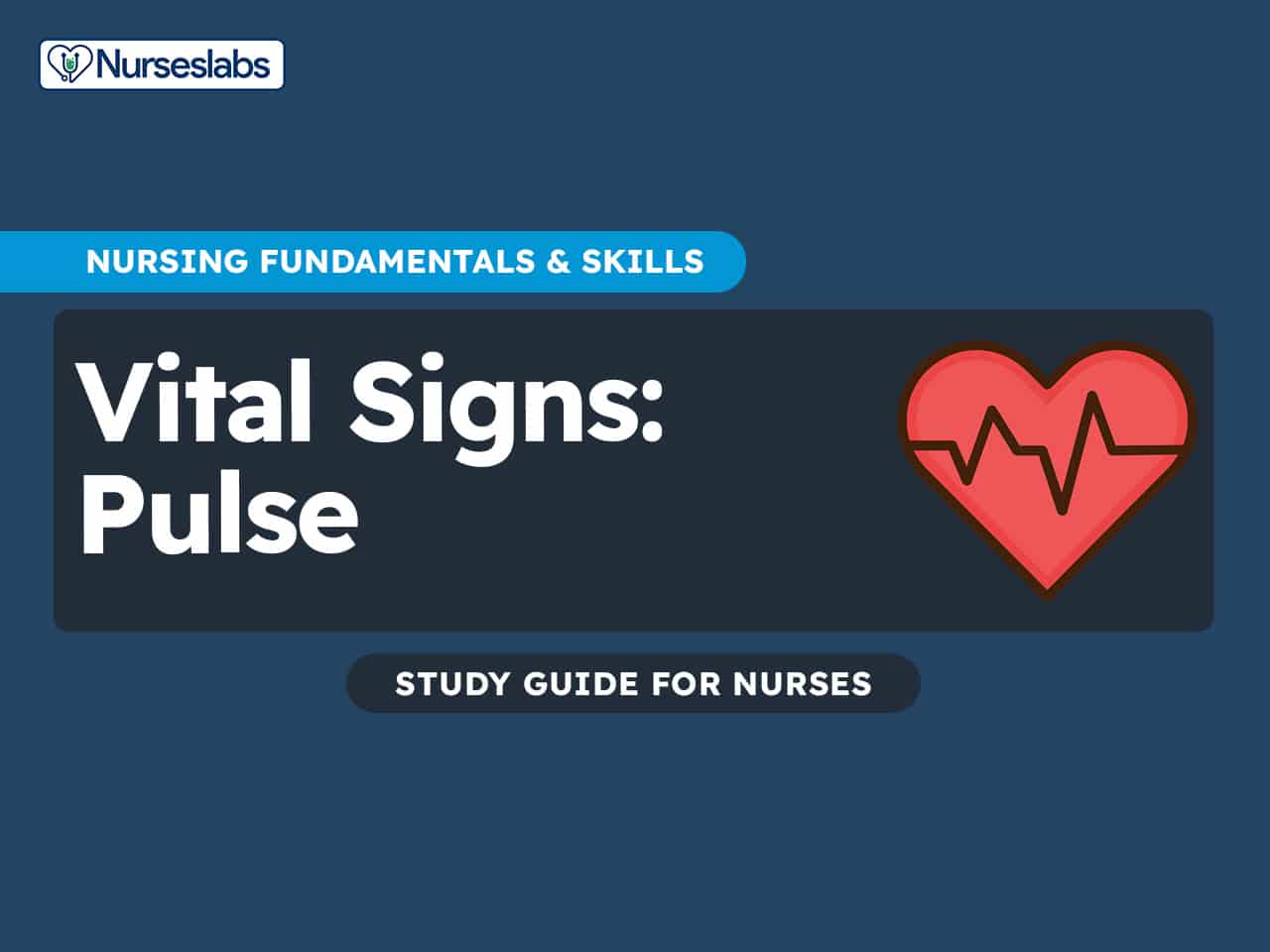
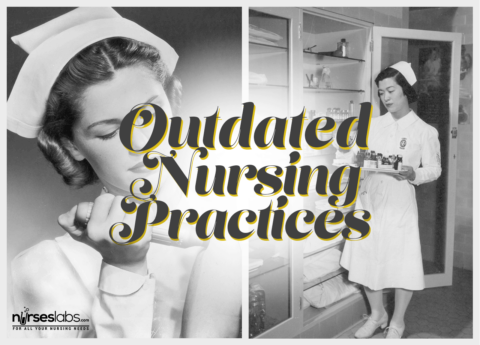




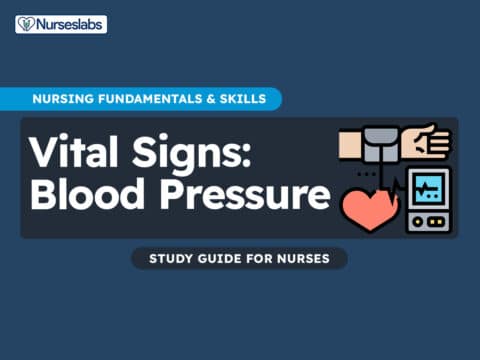
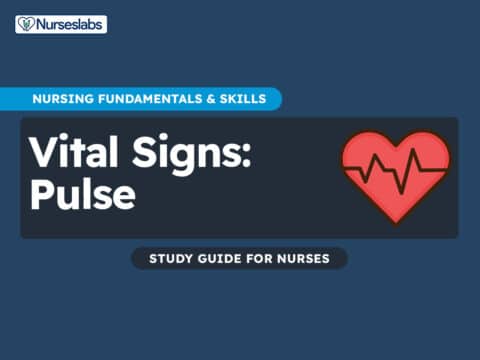
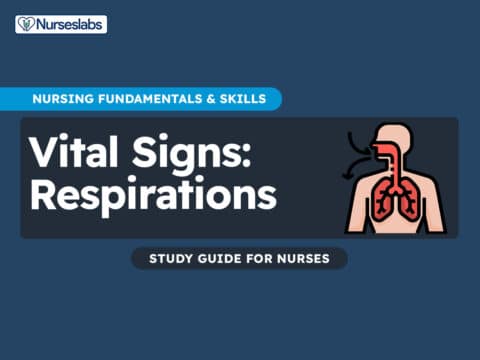
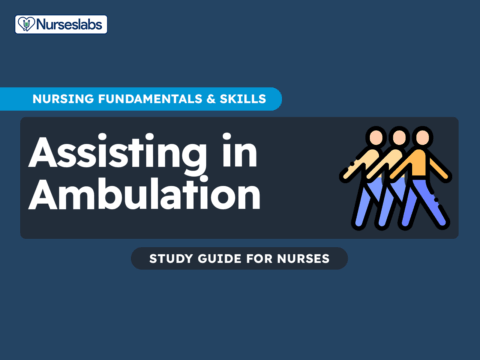
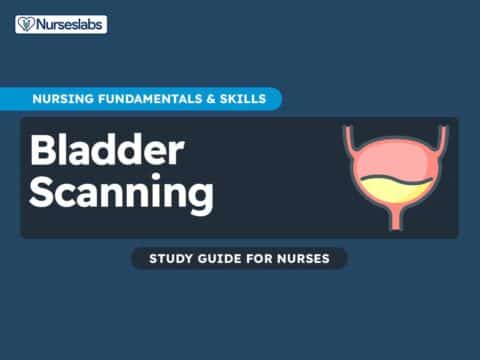










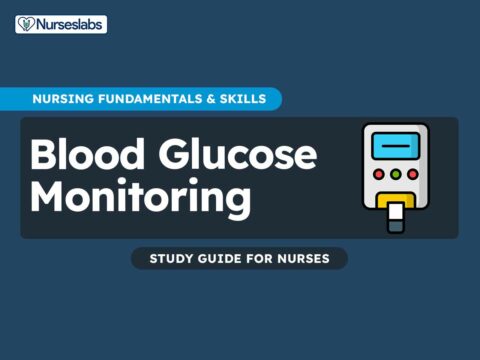









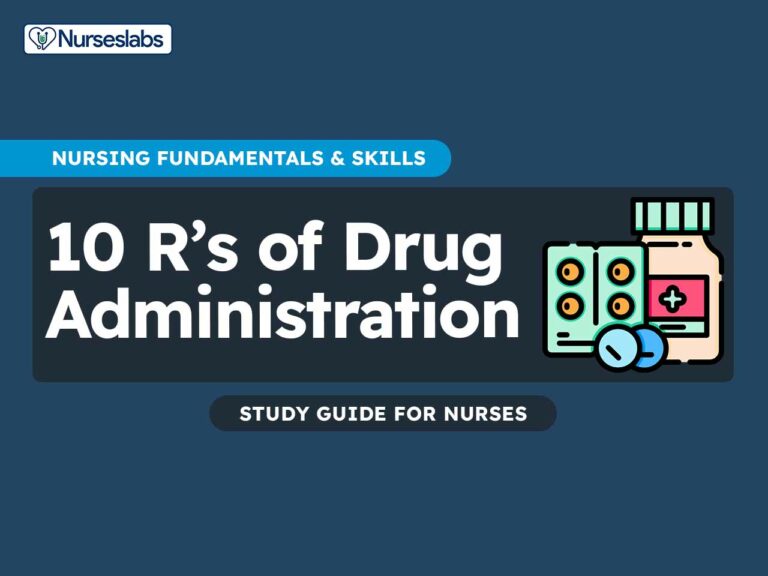



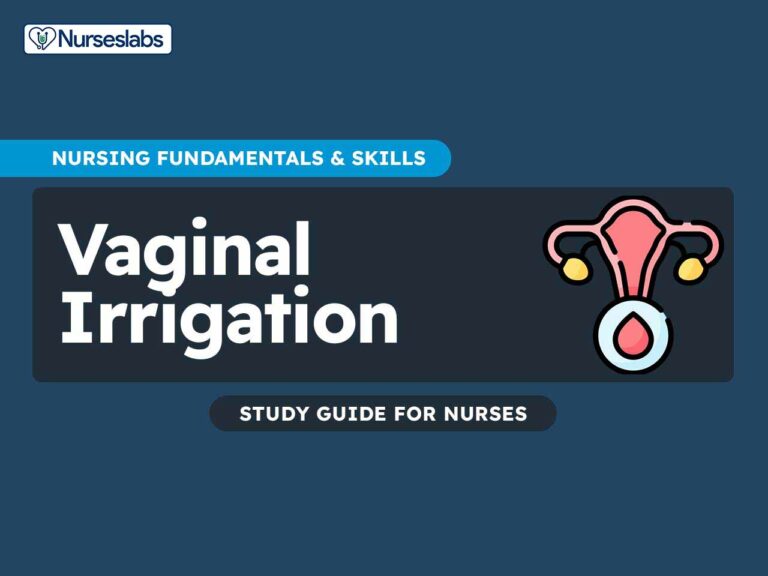

Leave a Comment